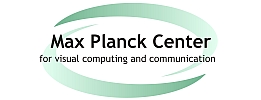| Foto | First Name | Last Name | Position |
|---|---|---|---|
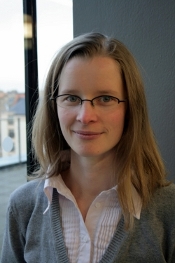 |
Vera | Demberg | Cognitive Models of Human Language Processing and their Application to Dialogue Systems |
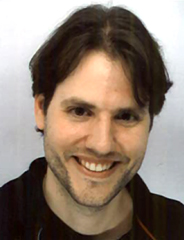 |
Elmar | Eisemann | Computer Graphics and Visualization |
 |
Markus | Flierl | Visual Sensor Networks |
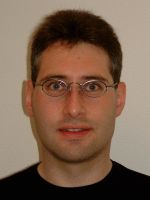 |
Markus | Flierl | Visual Sensor Networks |
 |
Stefan | Funke | Geometry-Guided Design and Analysis of Wireless Sensor Networks |
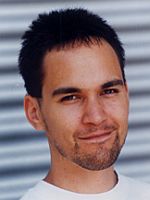 |
Stefan | Funke | Geometry-Guided Design and Analysis of Wireless Sensor Networks |
 |
Joachim | Giesen | Learning of Geometry: Given samples obtained from a shape we want to learn some of its geometric and topological characteristics. A popular example that fits in this framework is surface reconstruction: to obtain a digital model of some solid one samples |
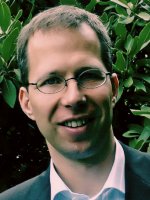 |
Joachim | Giesen | Learning of Geometry |
 |
Stefan | Gumhold | 3D Animation Processing |
 |
Stefan | Gumhold | 3D Animation Processing |
Researcher
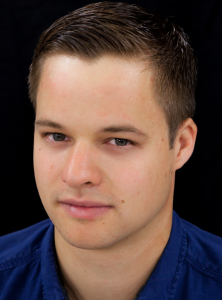 |
Dr. Michael Zollhöfer |
Visual Computing, Deep Learning and Optimization
| Name of Research Group: | Visual Computing, Deep Learning and Optimization |
| Homepage Research Group: | web.stanford.edu/~zollhoef |
| Personal Homepage: | zollhoefer.com |
| Mentor Saarbrücken: | Hans-Peter Seidel |
| Mentor Stanford: | Pat Hanrahan |
| Research Mission: | The primary focus of my research is to teach computers to reconstruct and analyze our world at frame rate based on visual input. The extracted knowledge is the foundation for a broad range of applications not only in visual effects, computer animation, autonomous driving and man-machine interaction, but is also essential in other related fields such as medicine and biomechanics. Especially, with the increasing popularity of virtual, augmented and mixed reality, there comes a rising demand for real-time low latency solutions to the underlying core problems. My research tackles these challenges based on novel mathematical models and algorithms that enable computers to first reconstruct and subsequently analyze our world. The main focus is on fast and robust algorithms that approach the underlying reconstruction and machine learning problems for static as well as dynamic scenes. To this end, I develop key technology to invert the image formation models of computer graphics based on data-parallel optimization and state-of-the-art deep learning techniques. The extraction of 3D and 4D information from visual data is highly challenging and under-constraint, since image formation convolves multiple physical dimensions into flat color measurements. 3D and 4D reconstruction at real-time rates poses additional challenges, since it involves the solution of unique challenges at the intersection of multiple important research fields, namely computer graphics, computer vision, machine learning, optimization, and high-performance computing. However, a solution to these problems provides strong cues for the extraction of higher-order semantic knowledge. It is incredibly important to solve the underlying core problems, since this will have high impact in multiple important research fields and provide key technological insights that have the potential to transform the visual computing industry. In summer 2019 Michael Zollhöfer joined Facebook. |
Researcher
- Name of Researcher
- Babaei, Vahid
- Homepage of Research Group
- aidam.mpi-inf.mpg.de/?view=home
- First Name
- Vahid
- Last Name
- Babaei
- Foto
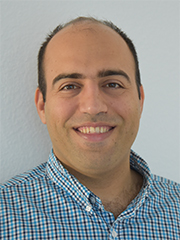
- url_foto
- Phone
- +49 681 302 70761
- Position
- Mentor in Saarbruecken
- Hans-Peter Seidel
- Mentor in Stanford
- Categories
- Current Groups
- Research Mission
- The Computation, Appearance and Manufacturing group focuses on inventing new computational tools that release the full potential of advanced manufacturing processes, such as additive manufacturing (also known as 3D printing). With the immense growth of the manufacturing hardware in resolution, scale and speed, the algorithm complexity increases even more dramatically. We therefore aim at developing hardware-aware, scalable algorithms for advanced manufacturing. The group has a particular interest in visual appearance of objects and strives for better algorithms that help creating products with novel and useful appearance characteristics using advanced manufacturing tools. For many products, their appearance is as important as their functional goal, sometimes their sole function. In our group, we focus on developing appearance reproduction workflows for a variety of hardware and processes. In case of multi-material 3D printers, given a physical object, we try to find an efficient and accurate mapping from its appearance to the digital arrangement of printer's materials, such that the printed copy is as perceptually close as possible to the original one. The results of this research will immediately enable numerous applications in rapid prototyping and manufacturing of end-use products. This spans several application domains from medical devices and surgical training, to cultural heritage preservation and anti-counterfeiting. A particular interesting application for appearance fabrication, also a focus of our group, is fine art reproduction. Fine art objects are instruments for aesthetic contemplation as well as social scientific studies. Fine art artifacts are exposed to different dangers, such as aging and destruction even though they already incur huge costs to museums for conserving them. It is essential that we learn to preserve this heritage for ourselves and future generations. We take fine art as a primary case study for our research on appearance reproduction. Beside the importance for cultural heritage preservation, work of art is an ideal case study since all elements of appearance are present: 3D texture, spectral color, gloss and translucency. In our group, we pursue the simultaneous modeling and replicating of these appearance attributes -- a complex, unsolved problem.
- mission_rtf
The Computation, Appearance and Manufacturing group focuses on inventing
new computational tools that release the full potential of advanced
manufacturing processes, such as additive manufacturing (also known as 3D printing). With the immense growth of the manufacturing hardware in
resolution, scale and speed, the algorithm complexity increases even more dramatically. We therefore aim at developing hardware-aware, scalable algorithms for advanced manufacturing.The group has a particular interest in visual appearance of objects and
strives for better algorithms that help creating products with novel and
useful appearance characteristics using advanced manufacturing tools.
For many products, their appearance is as important as their functional goal, sometimes their sole function. In our group, we focus on developing appearance reproduction workflows for a variety of
hardware and processes.In case of multi-material 3D printers, given a physical object, we try to find an efficient and accurate mapping from its appearance to the digital arrangement of printer’s materials, such that the printed copy is as perceptually close as possible to the original one. The results of this research will immediately enable numerous applications in rapid
prototyping and manufacturing of end-use products. This spans several
application domains from medical devices and surgical training, to
cultural heritage preservation and anti-counterfeiting.A particular interesting application for appearance fabrication, also a
focus of our group, is fine art reproduction. Fine art objects are
instruments for aesthetic contemplation as well as social scientific
studies. Fine art artifacts are exposed to different dangers, such as
aging and destruction even though they already incur huge costs to museums for conserving them. It is essential that we learn to preserve this heritage for ourselves and future generations. We take fine art as a primary case study for our research on appearance reproduction. Beside the importance for cultural heritage preservation, work of art is an ideal case study since all elements of appearance are present: 3D texture, spectral color, gloss and translucency. In our group, we pursue the simultaneous modeling and replicating of these appearance attributes — a complex, unsolved problem.
- Name of Research Group
- Artificial Intelligence aided Design and Fabrication
Personal Info
- Photo

- Website, Blog or Social Media Link
